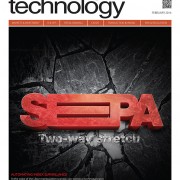The LIBOR transition: why financial organisations need to work smarter and not harder
This LIBOR solution replaces an army of paralegals with technology able to extract information from a 200-page document and over 140 various data points.
This LIBOR solution replaces an army of paralegals with technology able to extract information from a 200-page document and over 140 various data points.
How NIIT Technologies is supporting businesses grappling with LIBOR transition.
ISDA writes letter to FCA asking for greater information on Libor phase-out.
Catch up on Banking Technology’s top five fintech stories of the week – all in one place! Mastercard gets approval to buy VocaLink for $920m Deal expected to close in coming weeks. Bank of England implicated in Libor rigging by secret recording Well, it was secret. FIS sheds Ambit Private Banking business FIS inherited it […]
ACI, the foreign exchange industry body, has called for the adoption of a new Model Code for sell-side and buy-side firms on financial benchmarks, to harmonise codes of conduct and prevent a recurrence of the Libor and other recent rate fixing scandals.
A nominal six-month delay in the need to migrate to SEPA-compatible formats hasn’t slowed down the rush to convert clients
In the wake of scandals involving manipulation of market indices, can statistical learning theory be used to detect and fix anomalies in Libor and other market indices?
The International Swaps and Derivatives Association has set a date for the first stage of sweeping changes to the ISDAFIX benchmark for annual swap rates, as part of a major global push to clean up rates and make them more accountable.
With lots of different regulatory benchmark efforts now underway, the industry could be forgiven for not taking a common stance. With IOSCO issuing final principles, ESMA and the EBA are simultaneously consulting on a European set of principles. Meanwhile the UK is moving ahead with its own reforms.
Uncertainty over the mechanism for calculating the Libor benchmark in future remains in the wake of the generally applauded appointment of NYSE Euronext as its new administrator.
European regulators have until March to impose a code of conduct on banks contributing to the creation of the Euribor interbank lending rate benchmark. The deadline is included in recommendations published by the European Securities and Markets Authority and the European Banking Authority following their joint work on benchmark rate-setting processes in the wake of the Barclays Libor scandal and other rate-fixing revelations.










